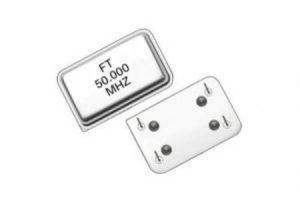The Role of Crystal Oscillators in Timing Devices
What is meant by a timing device?
- A crystal oscillator is a digital timing device that creates an extremely precise frequency-based electrical signal by leveraging the mechanical resonance of a piezoelectric element vibrating crystal. This signal can be produced to retain the time or create a clock signal for digital integrated circuits.
- Timing devicesare called crystal oscillators to deliver a steady supply of electrical impulses at a specific frequency. They are utilized in several fields, such as computing, communications, and automobiles.
The Benefits of Using a Crystal Oscillator for Timing Devices:
Due to their great precision and stability across a wide temperature range, crystal oscillators are frequently utilized in timing devices.
- Real-time clocks (RTC):
Clocks that maintain track of time and date in real-time are known as real-time clocks (RTC). Digital watches, alarm clocks, and electronic calendars are just a few of their uses of them.
- Crystal oscillators:
Electronic devices called crystal oscillators to employ quartz crystals to provide precise and reliable clock signals. They are utilized in various electronic equipment, such as microprocessors, messaging platforms, and data storage units.
- Crystal timers:
Crystal clocks employ a crystal oscillator to measure a certain length of time, such as seconds or minutes. They are frequently employed in industrial settings, such as regulating process length or timing devices.
Quartz crystals are used in crystal resonators, which are instruments that produce exact frequencies. In addition to being utilized in electronic filters and amplifiers, they are frequently employed in radio and television transmitters.

- Clock generators:
Clock generators use a crystal oscillator to produce a clock signal at a given frequency. They are utilized in various digital systems, including those found in computers, telecommunications devices, and consumer electronics.
How do crystal devices and timing devices relate to one another?
Timing devices are electronic parts that offer a precise and reliable timing signal for various applications, including electronic circuits, clocks, and watches. A piezoelectric crystal is used in crystal devices to provide a precise and consistent frequency signal, making them a timing device. The following steps are commonly included in the process of timing devices connected to crystal devices:
- Crystal Selection:
The first stage in the procedure is to choose a crystal that satisfies the application’s necessary standards for frequency and stability. It is important to carefully analyze the crystal’s resonance frequency and temperature properties to achieve precise and steady timing. Crystal devices are available in a wide variety of frequencies.
- Crystal Mounting:
Crystal packing is the technique of mounting a crystal onto a board or box after it has been chosen. In this procedure, the crystal is soldered onto a board or packaging, carefully secured and positioned.
- Oscillator Circuit Design:
When the crystal is attached, an oscillator circuit must be created to provide a steady frequency signal depending on the crystal’s resonance frequency. A feedback loop is often part of the oscillator circuit and uses the crystal to maintain the output signal’s frequency.
- Frequency Adjustment:
When the oscillator circuit has been constructed and put into practice, it may be necessary to change the output signal’s frequency to ensure it satisfies the requirements. The circuit’s capacitance or inductance may need to be changed to fine-tune the frequency.
- Testing and Quality Control:
The timing device must go through testing and quality control procedures to ensure it satisfies the required performance requirements. Testing the frequency stability over various temperatures and voltages, as well as other performance characteristics like jitter and phase noise, may be necessary.
Crystalline Oscillator Circuits for Timekeeping Devices:
- Crystalline oscillator circuits are frequently employed in timekeeping devices like clocks and watch to offer a reliable and precise time basis. These circuits produce a precise frequency signal using a piezoelectric crystal as the resonant element.
- An alternating electric field applied to a crystal causes it to vibrate at a certain frequency, which is the fundamental idea behind crystalline oscillator circuits. The piezoelectric effect is the name for this characteristic. The crystal is often sliced and sculpted into a specified size and orientation to achieve the appropriate resonance frequency.
- The crystal is linked in parallel with a capacitor and an amplifier in a conventional oscillator circuit. The amplifier supplies the necessary gain to make up for circuit losses and maintain the oscillation. The capacitor adjusts the circuit’s frequency to coincide with the crystal’s resonance frequency.
- The oscillator circuit produces a sinusoidal waveform whose frequency is set by the crystal’s resonance frequency. The time basis for the timekeeping device is often created by dividing down this waveform to create a lower frequency signal.
- Frequency variations in crystalline oscillator circuits are in the range of parts per million (ppm) or better, making them extremely precise and stable. They have a long operational life and are incredibly dependable. They are, therefore, often employed in a wide range of timekeeping applications, including clocks, watches, and electrical systems that need accurate timing.
The Purpose of Crystal Oscillators in Timing Devices:
- Crystal oscillators are crucial in timing devices by giving clock signals an accurate and steady reference frequency. Timing devices are used in many applications, including data processing, consumer electronics, and communication systems.
- A certain electrical signal frequency is produced by a crystal oscillator, a form of the electronic oscillator circuit, using the mechanical resonance of a quartz crystal. To synchronize clocks and timing devices, a crystal oscillator produces a steady, accurate, and constant frequency.
- Crystal oscillators are frequently employed as reference or clock oscillators in timing devices. For the device’s various timing circuits, including clock divisions, phase-locked loops, and frequency synthesizers, the reference oscillator delivers a steady frequency signal that serves as a reference. The device’s digital circuitry is operated in synchrony thanks to the exact clock signal produced by the clock oscillator.
- The crystal oscillator’s accuracy and stability are crucial for precise timing device timing. Crystal oscillators are made to minimize these effects and offer steady functioning under various operating situations. Temperature, voltage, and other variables can impact the oscillator’s frequency.
Conclusion:
Timing devices called crystal oscillator produces an electrical signal with a fixed frequency. This component is frequently used in several products, such as radio receivers, computers, clocks, watches, and other electronic devices. ChipSun has always attempted to maximize the value of its clients by offering a wide range of solutions for various frequency control components, components, and modular design needs to fulfil all of their requests. Our Technologies frequently go above and above what is expected of them by their customers in terms of cost, quality, delivery, and other areas.
